PLATES

Andy Warhol, America’s most famous pop artist, designed Life Savers in 1985 as part of his “Ads” series. This screen print celebrates the iconic hard candies called Life Savers that first appeared in a “Five-Flavor” roll in 1935; their flavors of pineapple, lime, orange, cherry, and lemon did not change for 70 years. © 2014 the andy warhol foundation for the visual arts, inc. / artist rights society (ars), new york. courtesy of ronald feldman fine arts, new york

Sugarcane belongs to the genus Saccharum, which comprises tall, segmented grasses similar to bamboo but rich in sugar. Saccharum officinarum, the main cultivated sugarcane, has a reed-like stalk filled with sap. Here, a young boy chews a fibrous cane for a sweet treat. n. durrell mckenna, wellcome images

In 1928 Walter Diemer used latex to improve the elasticity of an earlier chewing gum formula. The result was Dubble Bubble, the first commercially successful bubble gum. Since then, the gum has spread worldwide, as evidenced by this young girl blowing a bubble in Potosí, Bolivia. photo by kimberley coole / getty, lonely planet images collection

This portrait by the South African photographer Zwelethu Mthethwa (1960–) captures the proud grace of a sugarcane worker, who engages directly with the viewer, machete and cane stripper in hands silvered with dirt. © zwelethu mthethwa. courtesy of the artist and jack shainman gallery, new york
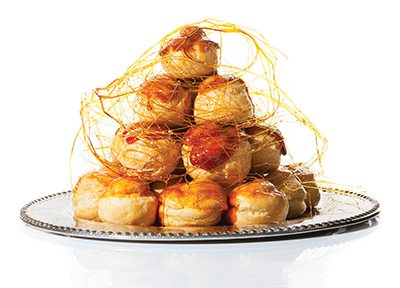
A dramatic pyramid of caramel-drizzled cream puffs, the French croquembouche makes frequent appearances at weddings and other ceremonial occasions. Its literal meaning of “crunch in the mouth” captures the caramel’s crackle. © todd coleman
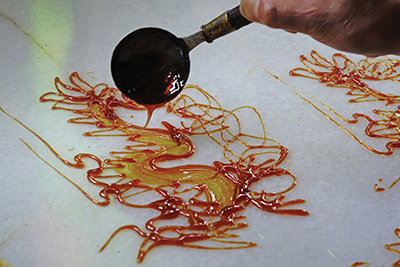
The Chinese folk art of sugar painting, creating fanciful forms out of caramelized rock sugar, is now recognized as part of China’s cultural heritage. Regional practitioners can be found at temple fairs, at markets, and in parks. © hupeng / dreamstime.com
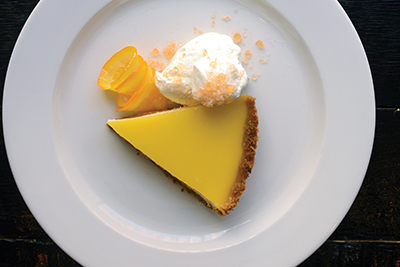
Pastry chef Tracy Obolsky of the North End Grill in New York City transformed the Creamsicle ice cream treat of her childhood into a sophisticated pie made with a graham cracker crust, Bavarian cream, bitter marmalade, and orange gelée. Whipped cream and candied orange slices complete the dessert. photo by niko triantafillou / serious eats
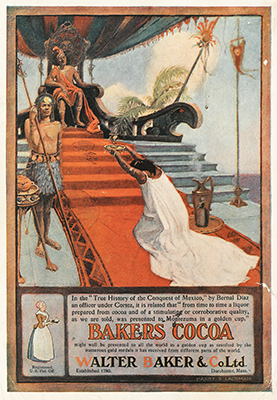
The American chocolate company Baker’s was an early proponent of mass advertising. This ad plays on chocolate’s Latin name, Theobroma (food of the gods), as cocoa is offered up to the Aztec king in a solid gold cup.

Child labor is an issue of global concern, especially in the chocolate industry, where young children are forced to work under often hazardous conditions. Despite lawsuits, the practice continues, particularly in the cacao-producing regions of West Africa.
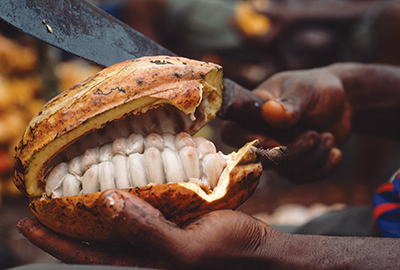
A farmer harvests the mature pods of the cacao tree (Theobroma cacao), the beans of which are used to produce chocolate. james l. stanfield / national geographic creative

The Domino Sugar Factory in Brooklyn, New York, was built in 1856 and at one point processed over half the sugar used in the United States. It stopped operating in 2004. Paul Raphaelson sought to capture the factory’s decay in a series of photographs titled Sweet Ruin: The Brooklyn Domino Sugar Refinery (2013–2014). © paul raphaelson
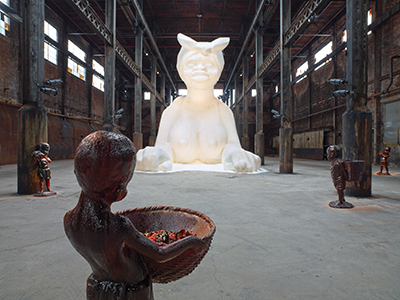
In 2014 the American artist Kara Walker constructed a sphinx-like, 75-foot-long sculpture of white sugar and carved polystyrene in the abandoned Domino Sugar Refining Plant in Brooklyn, New York. A Subtlety: The Marvelous Sugar Baby comments on both New York City’s plan to redevelop the factory as high-end condominiums and sugar’s dark role in the slave trade. artwork © kara walker. photo by jason wyche. courtesy of sikkema jenkins & co., new york

This anonymous painting from around 1900 depicts a scene at Vienna’s first coffeehouse, the Inn at the Blue Bottle, founded in 1683 by the Ukrainian Cossack Jerzy Franciszek Kulczycki, who had discovered coffeehouses while being held captive in Turkey.
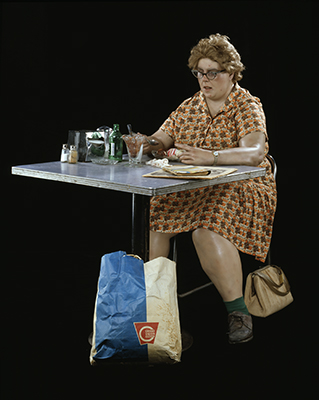
The American artist Duane Hanson was best known for his life-sized figural sculptures of middle-class men and women. Woman Eating (1971), a blunt representation of a woman eating ice cream, conveys isolation and the stigma of obesity. art © estate of duane hanson / licensed by vaga, new york, n.y. / smithsonian american art museum, washington, d.c. / art resource, n.y.
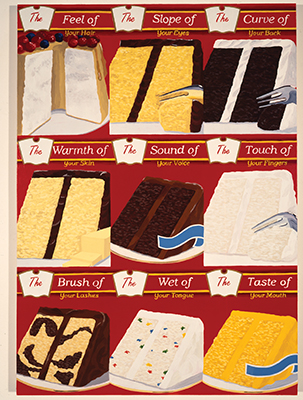
American artist Julia Jacquette borrows from old Duncan Hines cake mix boxes in this 1994 enamel on wood painting, recasting their wholesomeness as sensual dreams. The success of early cake mixes depended on convincing housewives that baking from a package was just as feminine and caring as making batter from scratch. courtesy of the artist
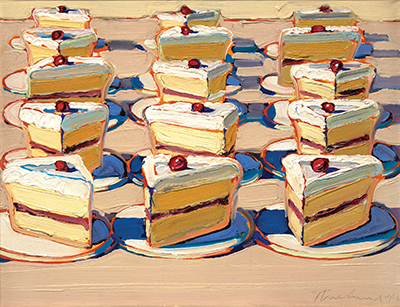
Although American artist Wayne Thiebaud never identified with Pop art, his paintings of commonplace items, especially his wonderful production-line pies, cakes, and cupcakes, likely influenced the movement. In Boston Cremes (1962), Thiebaud’s lush strokes are the frosting on each slice. art © wayne thiebaud / licensed by vaga, new york, n.y. / crocker art museum purchase, 1964
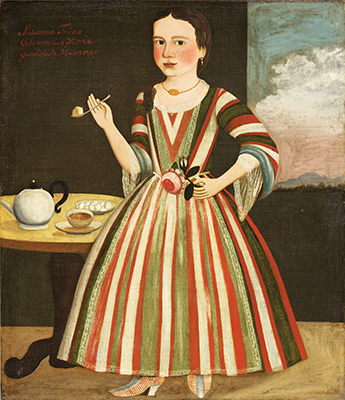
The accoutrements of a well-set tea table—teapot, teacup and saucer, sugar cubes, and sugar spoon—are all visible in this 1730 American folk portrait of Susanna Truax, ascribed to the Gansevoort Limner (possibly Pieter Vanderlyn). Most likely all of these objects were imported. national gallery of art, gift of edgar william and bernice chrysler garbisch
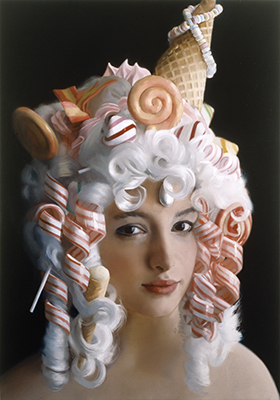
In his saccharine-sweet confectionery landscapes, many featuring cotton-candy clouds and nude women awaiting the viewer’s pleasured gaze, American artist Will Cotton explores desire and the needs that fuel our consumer society. Candy Curls dates to 2006. courtesy of the artist and mary boone gallery, new york

In Eyes Momma (1987), Al Hansen, a member of the 1960s Fluxus art movement, played with the Hershey’s candy bars he loved, using the wrappers and the name “Hershey” to create linguistic collages. courtesy of gracie mansion gallery, new york
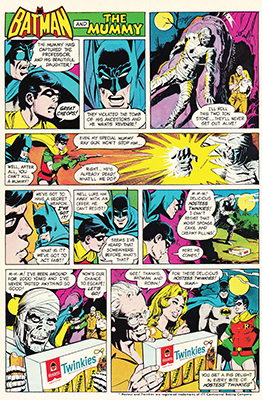
Hostess Twinkies are so famously supercharged with sugar that they were successfully used as the “Twinkie Defense” in the murder trial of San Francisco city supervisor Dan White. Apparently, these ultra-sweet snack cakes are popular with superheroes and mummies as well.
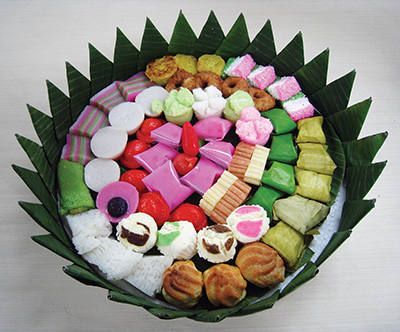
Colorful Indonesian kue, traditional bite-sized desserts, are often presented on a platter called jajan pasar (market treats) and given as gifts during Javanese holidays. photo by gunawan kartapranata
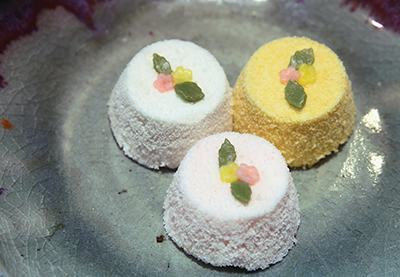
Paeksŏlgi, a type of Korean steamed rice cake (ttŏk), represents purity and is traditionally served on a child’s first birthday. The unusual yellow variety shown here is covered with powdered pumpkin. national museum of korea, seoul

This young man in Murshidabad, India, is expert at preparing khejur gur, syrup processed from the sap of the date palm. © gautam paul 2009
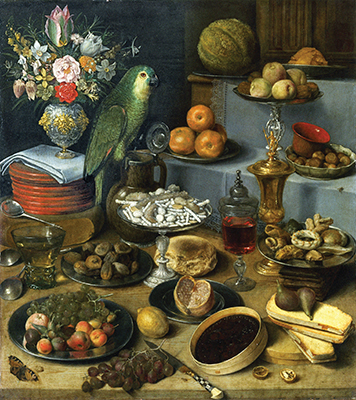
The table in German artist Georg Flegel’s Large Food Display (ca. 1630) is resplendent with fruit, nuts, pastries, and, at the center, sweetmeats and ragged comfits in a silver compote. It conveys wealth and cultivation while also recognizing symbols of Christian faith.
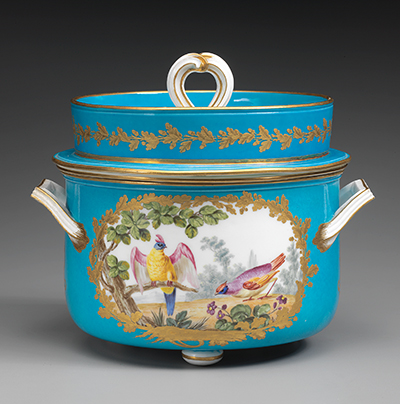
Wealthy eighteenth-century patrons commissioned elegant porcelain ice cream buckets to keep their ice cream cold at the table. This bucket, made by the Sèvres Royal Manufactory in 1771, held the ice cream in a liner surrounded by ice mixed with salt. Porcelain was favored because it didn’t corrode from the salt. the nelson-atkins museum of art
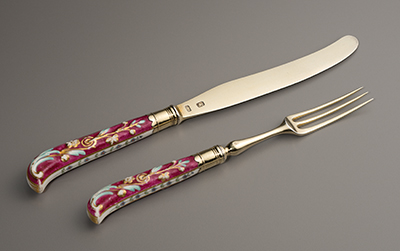
This silver gilt and porcelain dessert fork and knife come from a set of six, made in London around 1772, most likely by the silversmith Richard Parr. The knife shows the scimitar-shaped blade that was prevalent before being superseded by the straight blade. Both the blade and the tines of the fork are gilded to avoid oxidation on contact with acidic fruit. image © sterling and francine clark art institute, williamstown, massachusetts. photo by michael agee

This Czech poster from around 1900 advertises flavored lozenges made with “pure bee honey.” Lozenges are closely linked to the original concept of confectionery as medicine, for which materials are compounded to heal those who are sick. wellcome library, london
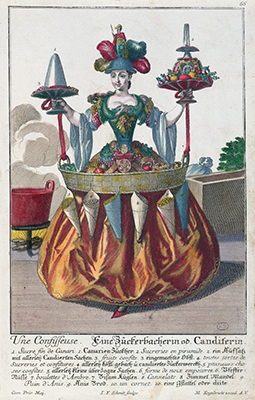
The French language maintains a clear distinction between sugar workers (confiseurs) and pastry cooks (pâtissiers), for whom sugar is but one ingredient among many. In this color engraving by Martin Engelbrecht from around 1735, a confectioner is festooned with bonbons and other sugary treats. bibliotheque des arts decoratifs, paris / archives charmet / bridgeman images
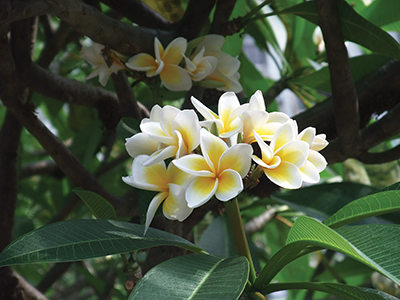
Frangipani (Plumeria rubra) is a deciduous shrub whose fragrant flowers come in shades of pink, yellow, and white. It is the namesake for frangipane, an almond-flavored pastry cream, which was originally perfumed with the blossoms’ essence. photo by minghong

The wonder of this berry from the West African shrub Synsepalum dulcificum is its miraculous ability to render sour tastes sweet. So it’s no surprise that the berry’s active ingredient, which binds to sweet receptors on the tongue, is called miraculin. photo by hamale lyman

Mary Curtis Ratcliff’s series of decorated cakes, called Mixed Messages, plays on the tension between the sweet and the repressed. Homage to Barbara Bush (1996) pays tribute to former First Lady Barbara Bush by suggesting her shock of white hair and pearls. © mary curtis ratcliff
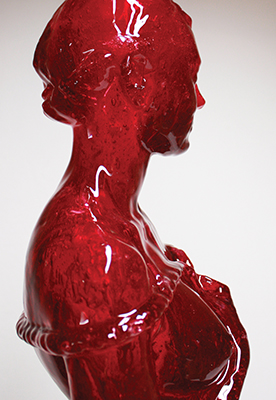
Joseph Marr’s sugar sculptures have an aesthetic borrowed from antiquity, but his techniques are decidedly modern. He uses a three-dimensional scanner to print a mold of his model and then fills the mold with sugar syrup and leaves it to harden. Cherry Laura, with its reference to sugar as a form of bondage, is from the 2011 series Desire is a Trap. © joseph marr
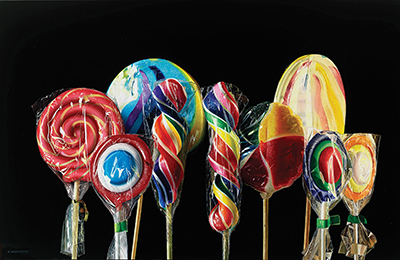
The hyperrealist Italian artist Roberto Bernardi turns everyday objects into compositions of luminous beauty. His 2012 oil painting Le Due Luci (The Two Lights) conveys lollipops’ essential deliciousness and delight. courtesy of the artist
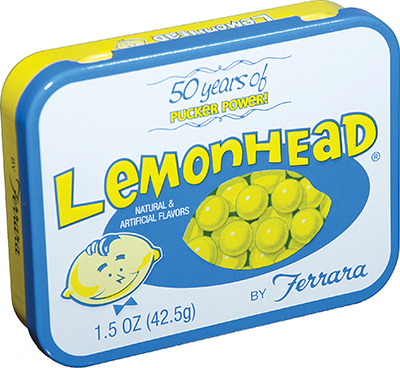
The Ferrara Candy Company was one of the first to experiment with hot and sour candies, developing the popular Red Hots in the early 1930s. Lemonheads, hard lemon candies coated in sour sugar, were introduced in 1962. This retro candy tin commemorated the 50th anniversary of the Lemonhead brand. © ferrara candy company
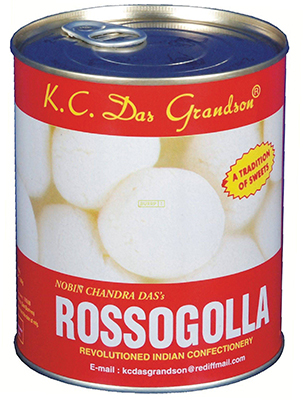
A beloved confection of fresh milk curd and sugar syrup, rosogolla is most closely associated with the West Bengal sweets-making tradition. K. C. Das, a rosogolla maker’s son, pioneered the technique of canning the sweet so that Indian expats throughout the world could enjoy it. © k. c. das grandson pvt. ltd.
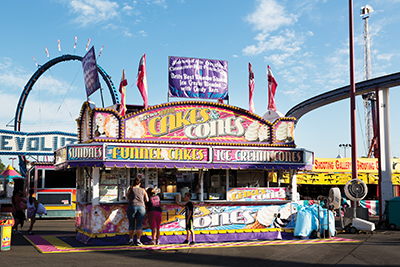
A funnel cake and ice cream cone vendor at the 2012 California State Fair in Sacramento, California. Ice cream cones were popularized in the United States at the 1904 St. Louis World’s Fair. library of congress
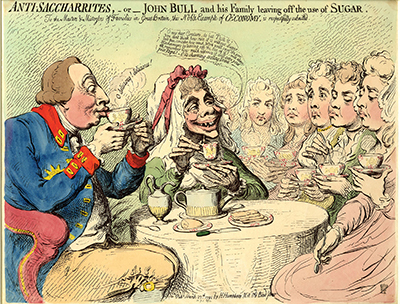
The abolitionist movement in England identified sugar as the root cause of slavery and the symbol of its evils. This 1792 etching by the British caricaturist James Gillray satirizes one of his favorite targets, King George III. Abolitionists had urged a sugar boycott in 1791; here George and his wife, Charlotte, propose giving up sugar in their tea, to their daughters’ dismay. © the trustees of the british museum
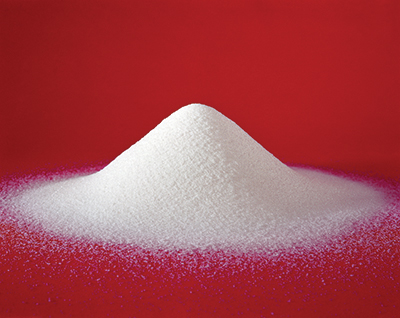
Shimon Attie’s series White Nights, Sugar Dreams (2000) explores the relation between sugar and blood, both of which are necessary to life. But imbalance—as happens with diabetes—can be dangerous. Attie’s beautiful C-prints meditate on his own illness and that of others, provoking fascination and fear. © shimon attie. courtesy of the artist and jack shainman gallery, new york

This condom advertisement by the Association de Lutte Contre le SIDA (Association for the Fight against AIDS) carries the message “With vanilla and lots of good things inside … vanilla, coconut, raspberry, mint or chocolate flavor. Condoms—have you tried them?” Color lithograph by R. Turqueti [199?]. wellcome library, london

Pharmaceutical companies have long sought to sweeten bitter pills. Medicines were, and still are, marketed in candy flavors to appeal to children and grownups alike.